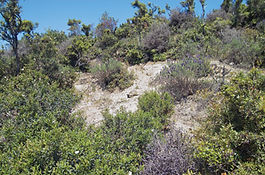
Meine Schildkrötengeschichte
Schildkröten begleiten mich nun schon seit über 50 Jahren. Solange ich zurückdenken kann sind Landschildkröten in unserem Garten auf der Wiese herumgelaufen und Wasserschildkröten in einem, damals noch betonierten, Gartenteich geschwommen.
Ich kann mich auch noch sehr gut daran erinnern, dass die Landschildkröten in Schuhkartons bei uns auf der Terrasse standen und tagsüber in einem hasengitterähnlichen Laufstall auf die Wiese durften. Damals wusste mein Vater über die Tiere noch sehr wenig.
Gefüttert wurden die Schildkröten mit Tomaten, Gurken, Bananen, Äpfeln, Pfirsichen, Erdbeeren und vorzugsweise selbst mit Küchenabfällen und Essensresten, wie Nudeln und dergleichen. Man fütterte die Schildkröten sogar mit in Milch eingeweichtem Weisbrot, weil das ja auch die Igel gerne fraßen. Als besonderer Leckerbissen wurde Hackepeter (Gehacktes Schweinefleisch) angeboten. Die Schildkröten liebten diese Ernährung, obwohl sie aus heutiger Sicht völlig ungeeignet war und in den meisten Fällen zum frühzeitigen Tod der Tiere führte.
Natürlich haben die Schildkröten auf der Wiese auch Pflanzen gefressen und bekamen zusätzlich Löwenzahn, Klee und Wegerich, viel mehr Futterpflanzen hatte mein Vater und anfänglich auch ich, gar nicht gekannt.


Leider ging damals auch die Unsitte um, die Schildkröten an der Leine zu halten. Hierzu wurde mit einem Handbohrer, Bohrmaschinen gab es noch keine, hinten im Panzerrand ein Loch gebohrt. Das geschah nicht böswillig und schon gar nicht um die Tiere zu quälen. Man machte sich wirklich keine großen Gedanken, sondern nahm fälschlicherweise an, dass es sich beim Panzerrand um totes Gewebe, ähnlich den Fingernägeln handelt. Man wollte nur, dass die ausbruchsfreudigen Schildkröten nicht ständig ausbüchsten und beim Nachbar im Garten herum liefen.
Warum die damals für fünf Mark im Zoogeschäft und sogar auf Wochenmärkten erhältlichen, bereits ausgewachsenen Schildkröten ständig weglaufen wollten, fand ich erst viel später heraus.
Ich habe mich bereits damals sehr um das Wohl unserer Schildkröten bemüht. Viel konnte ich jedoch nicht in Erfahrung bringen. Der Zoohändler in unserer Stadt wusste nur, dass er seine Tiere nicht, wie damals üblich, aus Griechenland oder Jugoslawien, sondern aus Italien bekam. Dort würden die Schildkröten in Büschen unmittelbar am Meer leben. An Literatur stand mir nur ein kleines Heftchen der Lehrmeister Bücherei aus dem Jahr 1956 zur Verfügung. Die hier enthaltenen Ratschläge waren allerdings aus heutiger Sicht von der natürlichen und damit artgerechten Haltung unserer Tiere noch weit entfernt.
So habe ich mich bereits in jungen Jahren für den natürlichen Lebensraum und vor allem auch für die Lebensweise der europäischen Schildkröten in der freien Natur interessiert und zunächst die Italienurlaubsaufenthalte mit meinen Eltern dazu genutzt die Tiere in der Natur aufzustöbern und zu beobachten.
In den Jahren danach waren die meisten meiner Urlaube und später die Urlaubsfahrten meiner Familie von den Schildkröten geprägt. Während meine Frau Gabriele die meiste Zeit am Stand auf unsere Kinder Jennifer und Manuel aufpasste war ich in den umliegenden Dünen und Hügeln zwischen den Büschen bei den Schildkröten.
Wann immer sich die Möglichkeit ergab fuhr ich zusammen mit Gabriele und unserem Hund mit dem Wohnmobil in den Süden um die Tiere vor Ort zu studieren. Mit Urlaubsfahrten im eigentlichen Sinne hatten diese Exkursionen schon lange nichts mehr zu tun. Dennoch waren sie für mich immer ein Ausgleich und Erholung von meiner früheren Arbeit. Seit meiner Pensionierung im Jahr 2012 bin ich für meine Exkursionen nicht mehr an bestimmte Zeiten gebunden.



Durch diese vielen Exkursionen in alle Länder Europas mit natürlichen Schildkrötenvorkommen, war schon vor langer Zeit die Natur das Vorbild für die Haltung meiner Tiere.



Mit entsprechend zusätzlicher Technik habe ich nach und nach versucht einen möglichst naturnahen Lebensraum zu schaffen in dem meine Schildkröten mehr oder weniger sich selbst überlassen ein Wildtierleben führen können.



Vor längerer Zeit, man könnte auch sagen gegen Ende des letzten Jahrhunderts, kam Manuel, damals 14 oder 15, auf eine „selbstlose Idee“. Er redete mir ein, dass ich unbedingt eine Homepage über meine Schildkröten machen müsste. Ihm ging es damals wohl eher um den dafür erforderlichen Internetanschluss. Schließlich konnte er mich überreden. Allerdings hat Manuel dann nicht nur selbst im Netz gesurft, sondern mit mir zusammen auch tatsächlich eine Homepage erstellt. Seither ist meine HP www.testudo-farm.de eine viel besuchte und kopierte Schildkrötenseite.
Aus dieser Homepage ist 2003 mein erstes Buch „Die natürliche Haltung und Zucht der Griechischen Landschildkröte“ entstanden. Das Buch ist heute breits in der dritten Auflage und ebenfalls in einer englischer Ausgabe erhältlich.



In der Folgezeit habe ich mehrere Bücher über die mediterranen Schildkröten und einen Reise-Bildband über Albanien geschrieben und in meinem eigenen Verlag verlegt.

„Europäische Schildkröten, Lebensraum und Lebensweise“ Das Buch ist auch in einer englischen Ausgabe „Mediterranean Tortoises“ erhältlich.



„Futterpflanzen für Landschildfkröten und andere Reptilien.“
Das Buch ist bereits in der 3. Neuauflage und auch in einer englischen Ausgabe „Feeder Plants for Mediterranean Tortoises“ erhältlich.



Ebenfalls seit 2003 halte ich auf Schildkröten-Tagungen und auf Vereinsabenden Vorträge rund um das Thema Schildkröten.
Immer wieder aktuelle Informationen insbesondere auch Reiseberichte von meinen Exkursionen in die Habitate finden sie auf https://www.facebook.com/wegehaupt.verlag
Kontakt
E-Mail:W.Wegehaupt@gmx.de
